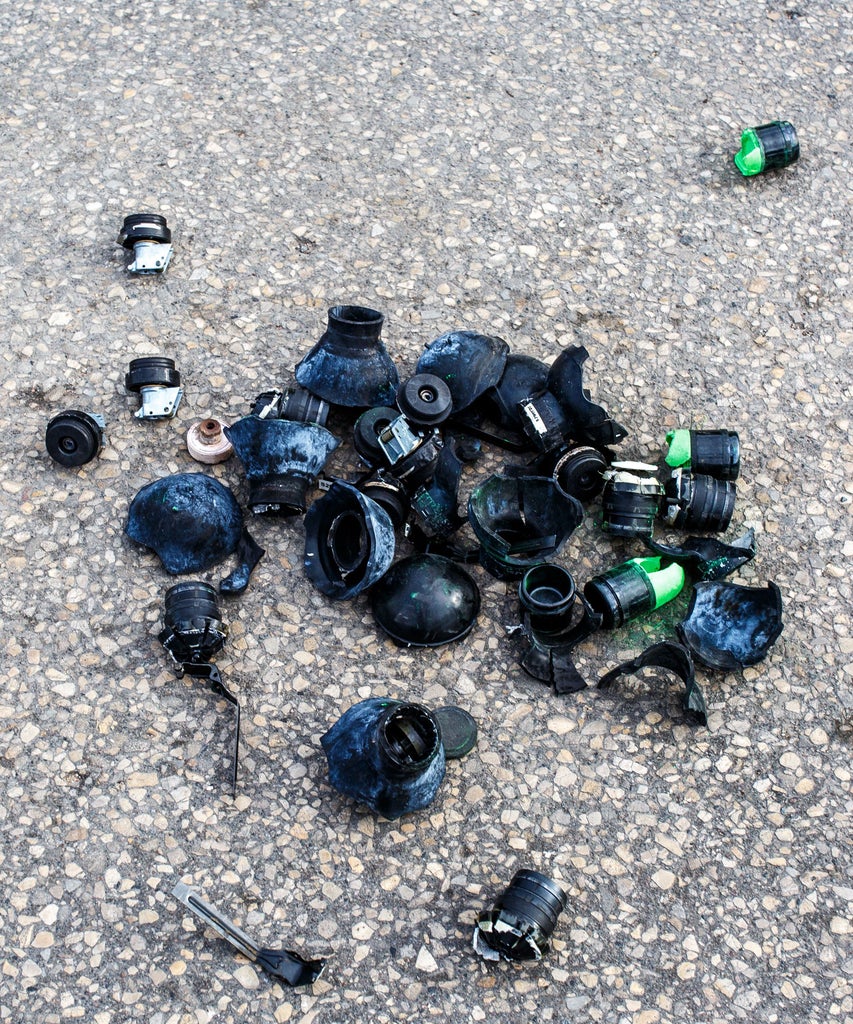
People are protesting across the country right now, demanding change after the killing of George Floyd. Although many of these protests are peaceful, in several cases, participants are being met by police in riot gear, who are using extreme crowd control methods, including tear gas — a chemical weapon that was banned in war in 1993 — and rubber bullets, which can do some serious damage.
“Nonlethal” bullets were first used in the the 1800s by British policeman, according to TIME. “[They] first hit upon the idea of using ammunition that administered blunt force instead of penetrating the body, starting with modified broom handles and then adopting wooden bullets made out of teak,” the writer of the post explains. “Citing safety concerns over splintering rounds, Brits on the home front made the change to rubber bullets.”
If shot from an appropriate distance, and aimed at the ground as intended (so they bounce up into the body, rather than hitting the body directly), rubber bullets aren’t meant to break skin. They’re supposed to feel like you’ve been hit with a paintball: not a great feeling — after all, they are intended to control crowds — but not debilitating.
Unfortunately, reports from protesters seem to indicate that all police may not be adhering to the safety rules.
Photos have surfaced that show injuries people have sustained from being shot by rubber bullets during peaceful protests, including one from journalist Adolfo Guzman-Lopez, who was hit by one in the neck. (Warning: This link at the end of this quote leads to graphic images of wounds caused by a rubber bullet.) “I had just interviewed a man with my phone at 3rd and Pine and a police officer aimed and shot me in the throat,” he tweeted.
Many of these photos depict injuries sustained after being shot by a rubber bullet at a close range, or shot in a vulnerable spot on the body.
Last night, my son was shot in the eye with a rubber bullet while peacefully protesting for justice for George Floyd. His story is not unique. Countless others have also experienced this use of excessive police force while trying to have their voices heard.
— Dale Murphy (@DaleMurphy3) June 1, 2020
In a 2017 review looking at data from 1,984 people who were wounded by kinetic impact projectiles (or KIPs, including rubber and plastic bullets), it was found that 53 died as a result of their injuries and 300 suffered permanent disability, often resulted from strikes to the head and neck, reports BMJ Open. The review also notes that “many KIPs have muzzle velocities equal to those of live ammunition.”
There is limited regulation surrounding the development of these kinds of weapons, and limited public information provided by manufacturers on their design and guidelines for use, according to the review.
A similar report was published in the Chinese Journal of Traumatology in 2016. In it, the researchers wrote that their findings were “also supportive of the opinion that these weapons are lethal and should hence be reclassified.”
In studies that stretch at least as far back as 2002, rubber bullets have been called “too dangerous for crowds.”
The most effective way to keep yourself safe from rubber bullets is to stay far away from anyone firing, to wear thick materials like denim and clothing that doesn’t leave areas of the skin exposed, and to bring along some sort of eye protection. If you’re heading out to a protest, follow these suggestions, and remember to stay safe and to stay alert.
To help bring attention to the police killing of George Floyd, you can sign the Change.org petition here, or donate to local organizations like Black Vision Collective or Reclaim the Block via the Minnesota Freedom Fund here.
Like what you see? How about some more R29 goodness, right here?
What Is Tear Gas, & What Does It Do To Your Body?
"The Police Are More Dangerous Than COVID-19"
Nurses On Protesting Amid The COVID-19 Pandemic
from Refinery29 https://ift.tt/3gGws74
via IFTTT

